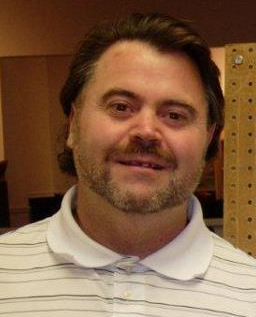Foster: Linking mental illness and mass shootings is tenuous, complicated
I've worked in mental health for 15 years. I was an advocate and rubbed elbows with politicians, their aides, and state mental health leaders for over a decade. My primary advocacy effort was to sway the Texas Legislature into spending more money on mental health treatment and architect a more accessible mental health care system. But it wasn’t because I thought people with mental illness were dangerous and needed surveillance. After spending time with mental health consumers, I wanted a system that would address their intrinsic suffering. I knew that most would not turn a gun on others. I feared the more probable scenario of depressed individuals turning a gun on themselves and ending the absurdity of a painful existence.
Yet, even the perpetually suicidal patient can be a caricature not grounded in reality. People with mental illness have broad and unique experiences and are truly heterogenous. Many people with mental illness are thriving and successful in their local communities. They are artists, musicians, health care workers, advocates, and spiritual leaders. One in five people are grappling with a mental illness, and more than a few are sculpting a meaningful life.
As a mental health advocate, I was never preoccupied with the notion that we needed to get people with mental illness into treatment before they kill someone. I was aware of the 2016 book, “Gun violence and mental illness” which was published by the American Psychiatric Association. The book describes in detail that people with serious mental illness account for less than 1% of yearly gun-related homicides. According to the National Alliance on Mental Illness, 5.6% of U.S. citizens currently grapple with a serious mental illness. Reviewing the statistics in context, it’s compelling that 5.6% of the population is contributing to less than 1% of the problem. With all things being proportionate, one might expect that 5.6% of the population would be contributing to 5.6% of the problem. The proportion analysis affirms the weak and tenuous link between gun violence and mental illness.
In 2009, researchers pooled data from four countries and discovered the odds of being killed by a stranger with schizophrenia is roughly 1 in 14,000,000 (Schizophrenia Bulletin, 2009). By comparison, the odds of being struck by lightning in a person’s lifetime is 1 in 3,000. These probabilities debunk the caricature of random homicide by unhinged madmen lurking in the shadows.
The Pittsburgh MacArthur Foundation Study (1998) purported that people with mental illness, recently discharged from the psychiatric hospital, were no more violent than their non-diagnosed counterparts except in cases where the patients abused drugs and alcohol. I would imagine those that don’t have a mental illness can be prone to violence as well when struggling with substance abuse.

Some epidemiological studies by Duke University and others show that people with mental illness are 2.5 to 11 times more likely to be victims of crime, rape, and exploitation.
I have worked and been involved with the same mental health peer support center for 17 years. I have seen two incidents of aggression in 17 years. That's right, 17 years. Myriad faces and personalities have walked through the door seeking help and reprieve. Some were in treatment, others had different ways of coping. By comparison, if you go to a local saloon, there will be more aggression by nightfall than anything I have personally witnessed in the past 17 years.
So why does the myth of mental illness and violence persist? Some of it is scapegoating. We are trying to make sense of unexplainable tragedy, so we resolve that dissonance by finding someone or something to blame. The mass shooting puzzle is scattered haphazardly on the floor, and we are cognitively trying to put the pieces together.
It seems hard for people to wrap their head around the notion that somebody sane could do terrible things. I always hear, “Well, they must have been mentally ill to commit such an atrocity.” Yet, The El Paso shooting taught us that hate can be a significant correlate of homicide against minorities. Haven’t we all seen crimes of passion where adultery sets the stage for gun violence? How many prisons are full of people who let their anger and baser tendencies win the day? How many family members have we witnessed resorting to fisticuffs over petty insults? Yet in many of these situations, mental illness is/was not the causative factor of the violent encounter.
Violence is a problem that affects us all, and I respectfully implore the media and my fellow Americans to spread the margarine of culpability fairly across the board. Please look at the research and talk to mental health and peer support workers in your community. They have insight into this issue. But more importantly, launch out into the deep and get to know people in your social circle who have mental illness. You will find the experience enriching as you learn about their struggles and discover that they are like everyone else just trying grind it out in this chaos we call “life.”
With respect to balanced journalism, it might be a worthy endeavor for the media to report on stories where people with mental illness are overcoming the odds and being contributors to their local communities. There are more than just a few out there.
Tony Foster is the executive director of Amarillo Area Mental Health Consumers and a longtime mental health advocate.
This article originally appeared on Amarillo Globe-News: Tony Foster mental illness, mass shootings link complicated tenuous
